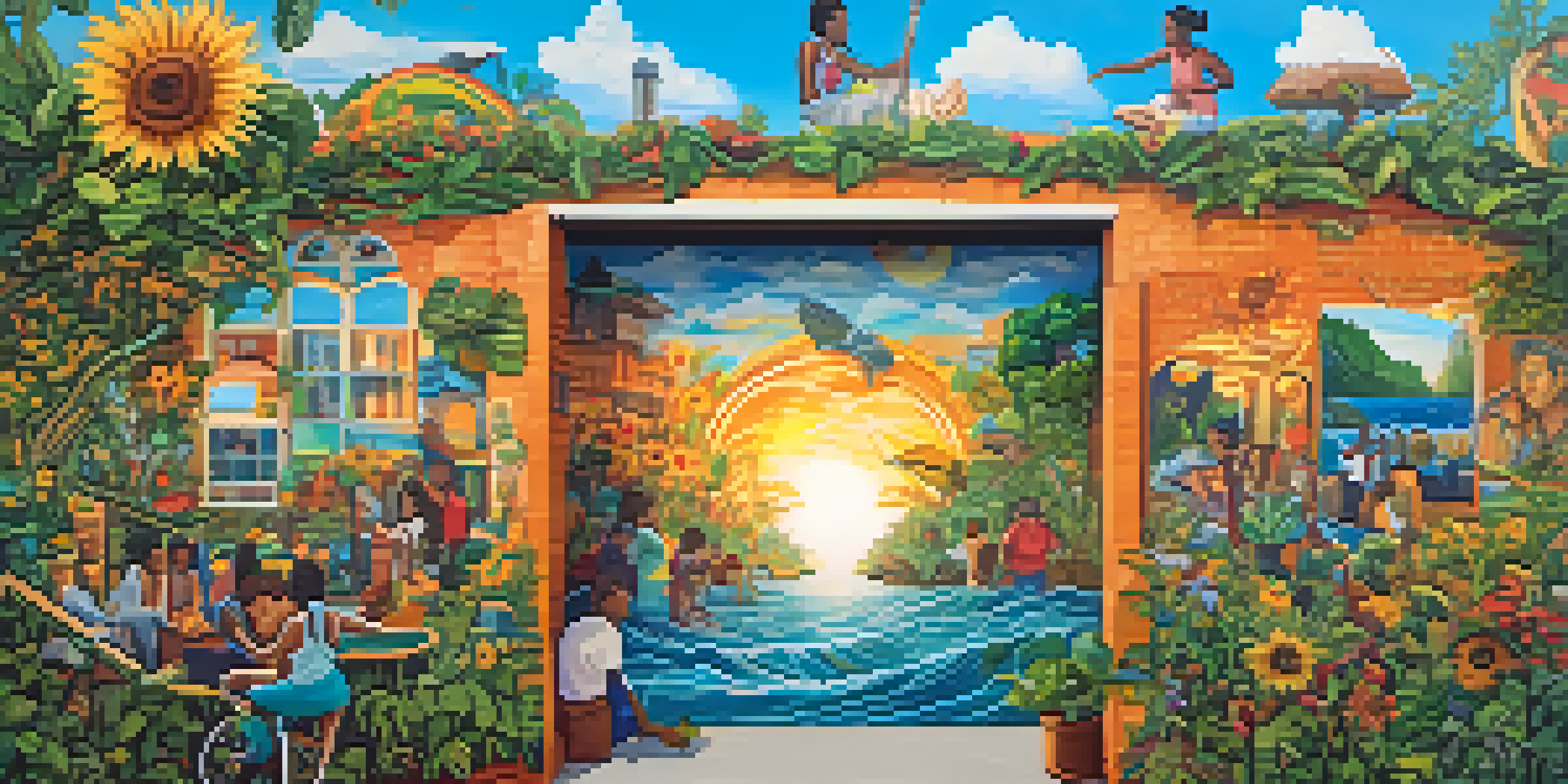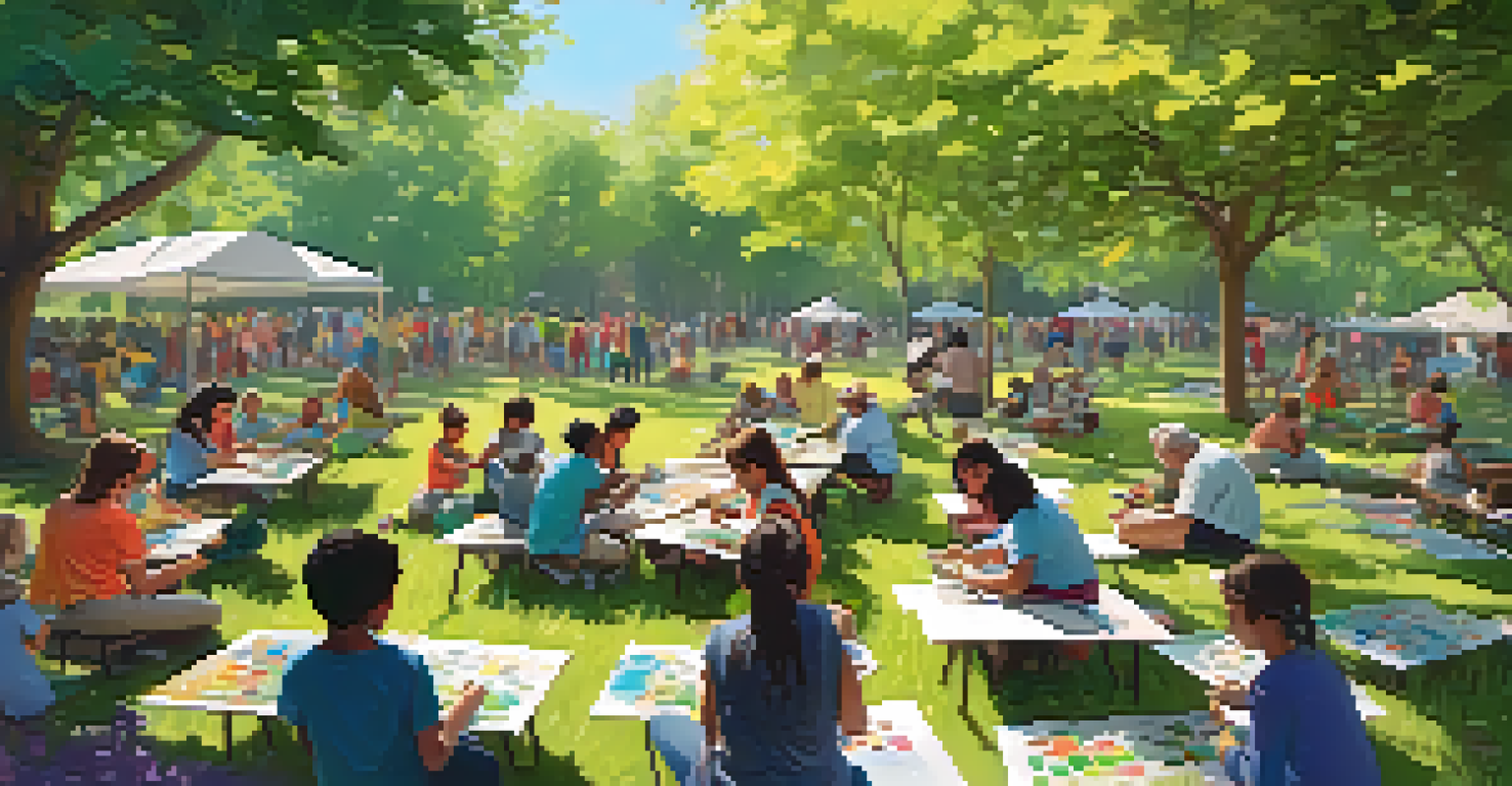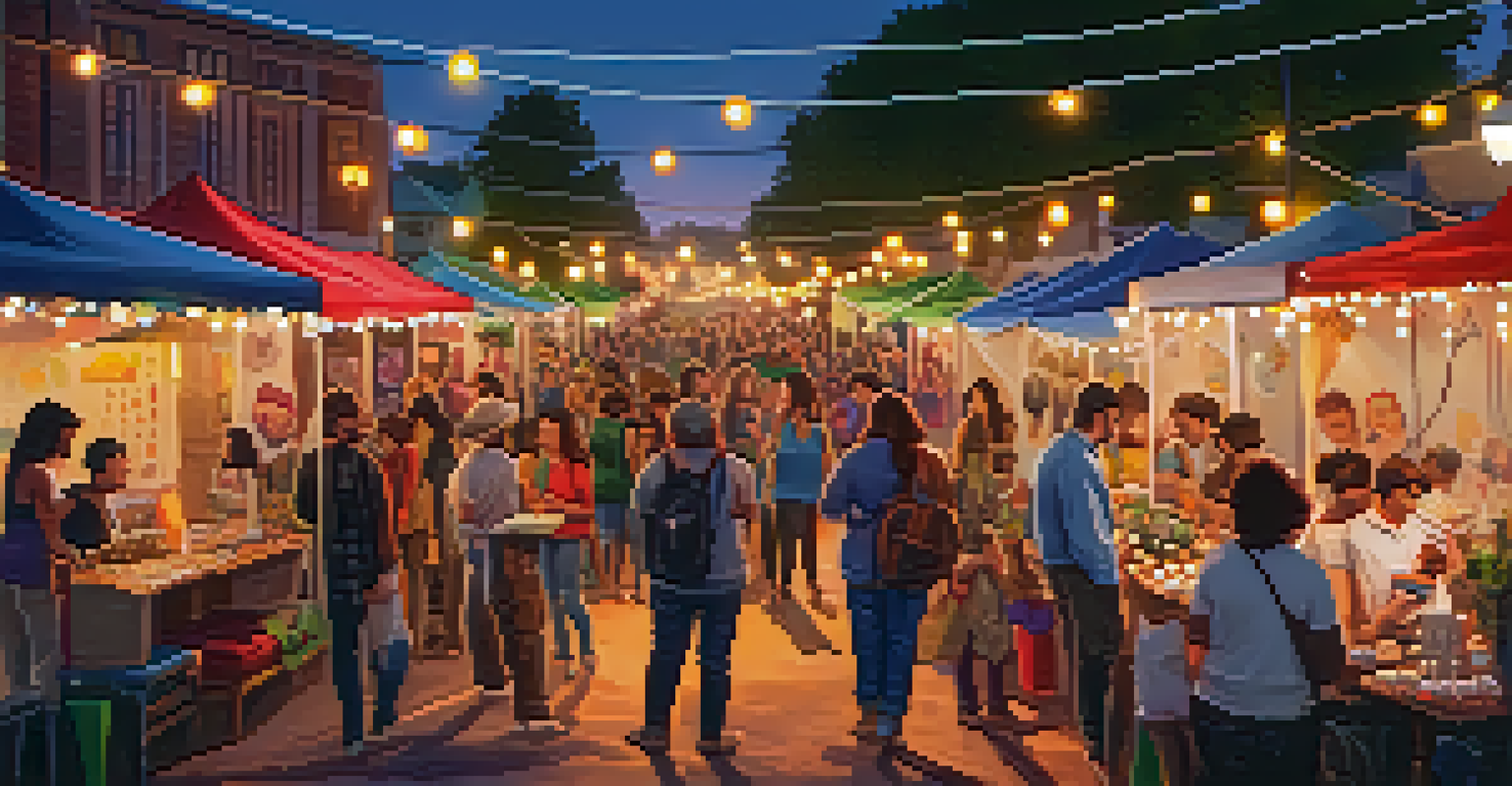Art as a Catalyst for Community Resilience in Climate Crisis

Understanding Community Resilience in a Changing Climate
Community resilience refers to the ability of a community to adapt, recover, and thrive in the face of challenges, including climate change. It's not just about bouncing back; it's about learning and evolving for the future. In a world increasingly impacted by environmental shifts, building resilience has become essential for communities everywhere.
Art is the most beautiful of all lies; it is a bridge that connects the past with the future, the individual with the community, and the heart with the mind.
As climate events become more frequent and severe, communities face disruptions that threaten their social fabric. From natural disasters to economic fluctuations, these challenges require a collective response. This is where art comes into play, acting as a unifying force that can inspire action and foster collaboration.
Art has the power to bring people together, nurturing a shared sense of purpose and identity. By harnessing creativity, communities can not only address immediate challenges but also inspire long-term resilience strategies. As we explore the role of art in this context, we can see how it helps communities envision a sustainable future.
Art as a Means of Expression and Awareness
Art serves as a powerful medium for expressing feelings around climate change, often translating complex emotions into relatable visuals and narratives. This expression can help individuals process their anxieties and fears, creating a shared space for dialogue. When people feel connected through art, they are more likely to engage in important conversations about climate issues.

Through various forms—be it paintings, murals, poetry, or performance—artists can illuminate critical issues, raising awareness and prompting action. For example, a mural depicting the effects of rising sea levels can not only educate viewers but also inspire them to advocate for change. This awareness is a crucial first step in mobilizing community efforts.
Art Enhances Community Resilience
Art fosters collaboration and a shared sense of purpose, helping communities adapt and thrive amidst climate challenges.
Moreover, art can amplify voices often marginalized in climate discussions, ensuring that diverse perspectives are included. By showcasing the experiences of those most affected, art fosters empathy and solidarity, creating a more comprehensive understanding of climate challenges.
Art Interventions in Climate-Affected Communities
Art interventions are specific projects that use creative expressions to address community needs, particularly in areas impacted by climate change. These initiatives can take many forms, from community art projects to temporary installations, all aimed at fostering resilience. For instance, a project might involve creating artworks from recycled materials, highlighting environmental sustainability.
Creativity is the power to connect the seemingly unconnected.
Such interventions not only beautify public spaces but also encourage community participation and ownership. When residents engage in creating art together, they build relationships and strengthen their networks, which are vital components of resilience. The act of collaborating on a creative project can lay the groundwork for future cooperative efforts in addressing climate challenges.
Additionally, these artistic endeavors can draw attention to local climate issues, prompting discussions that can lead to actionable solutions. By focusing on community-specific concerns, art interventions can tailor their messages and impact, making them more resonant and effective.
Building a Sense of Identity Through Art
Art plays a crucial role in defining and expressing community identity, particularly in times of crisis. When communities come together to create and celebrate their unique cultural heritage, they strengthen their bonds. This sense of identity can be a source of pride and motivation, particularly when facing the daunting challenges posed by climate change.
For example, festivals that showcase local art and culture can foster greater community cohesion and resilience. These events not only highlight local talent but also give residents a chance to reflect on their shared values and experiences. In this way, art becomes a vehicle for cultivating a strong, unified community identity.
Expression Through Art Sparks Dialogue
Art serves as a powerful medium to express emotions about climate change, facilitating important conversations and awareness.
Furthermore, having a distinct community identity can aid in resilience by attracting attention and resources. A vibrant arts scene can help draw support from outside organizations, ultimately benefiting the community's efforts to address climate impacts.
Art Education as a Tool for Empowerment
Incorporating art education into community programs can empower individuals to express their concerns and ideas about climate change. By learning various artistic techniques, community members can explore their creativity and develop skills that enhance their ability to communicate effectively. This empowerment is pivotal in fostering a proactive mindset toward climate issues.
Educational programs can also encourage critical thinking about environmental challenges, allowing participants to brainstorm and share innovative solutions. For instance, workshops on eco-art can inspire individuals to use sustainable practices in their creative processes, reinforcing the connection between art and environmental stewardship.
Ultimately, art education fosters a sense of agency, enabling individuals to take ownership of their narratives and contribute meaningfully to community resilience. When people feel equipped to voice their concerns, they are more likely to advocate for change in their communities.
Collaborative Art Projects for Community Engagement
Collaborative art projects are an excellent way to engage community members in addressing climate issues while fostering creativity and connection. These projects can range from large-scale murals to community gardens that incorporate artistic elements, each serving as a platform for collective expression. By working together, participants can build relationships that strengthen community ties.
Such projects often invite diverse voices, ensuring that all community members have a say in how their environment is represented. This inclusivity not only enriches the artistic process but also promotes a sense of belonging among participants. As individuals see their contributions reflected in the artwork, they develop a deeper connection to their community and its resilience.
Education Empowers Climate Action
Integrating art education into community programs empowers individuals to creatively address climate issues and advocate for change.
Additionally, these collaborative efforts can serve as a catalyst for ongoing dialogue about climate action. When art becomes a focal point for discussion, it can inspire collective initiatives aimed at addressing local environmental challenges, ultimately leading to a more resilient community.
The Future of Art and Community Resilience
As we look to the future, the role of art in fostering community resilience will only become more critical. With climate change presenting unprecedented challenges, communities will need all the tools at their disposal to adapt and thrive. Art can be a vital part of this toolkit, serving as a source of inspiration and a means of mobilizing collective action.
Emerging technologies, such as digital art and social media, offer new avenues for creative expression and community engagement. These platforms enable artists and activists to reach wider audiences, sharing their messages and inspiring action across geographical boundaries. As communities harness these tools, they can amplify their voices and strengthen their resilience efforts.

Ultimately, the future will depend on our ability to integrate art into our approaches to climate resilience. By recognizing the value of creativity and collaboration, we can foster stronger, more resilient communities that are prepared to face the challenges of tomorrow.